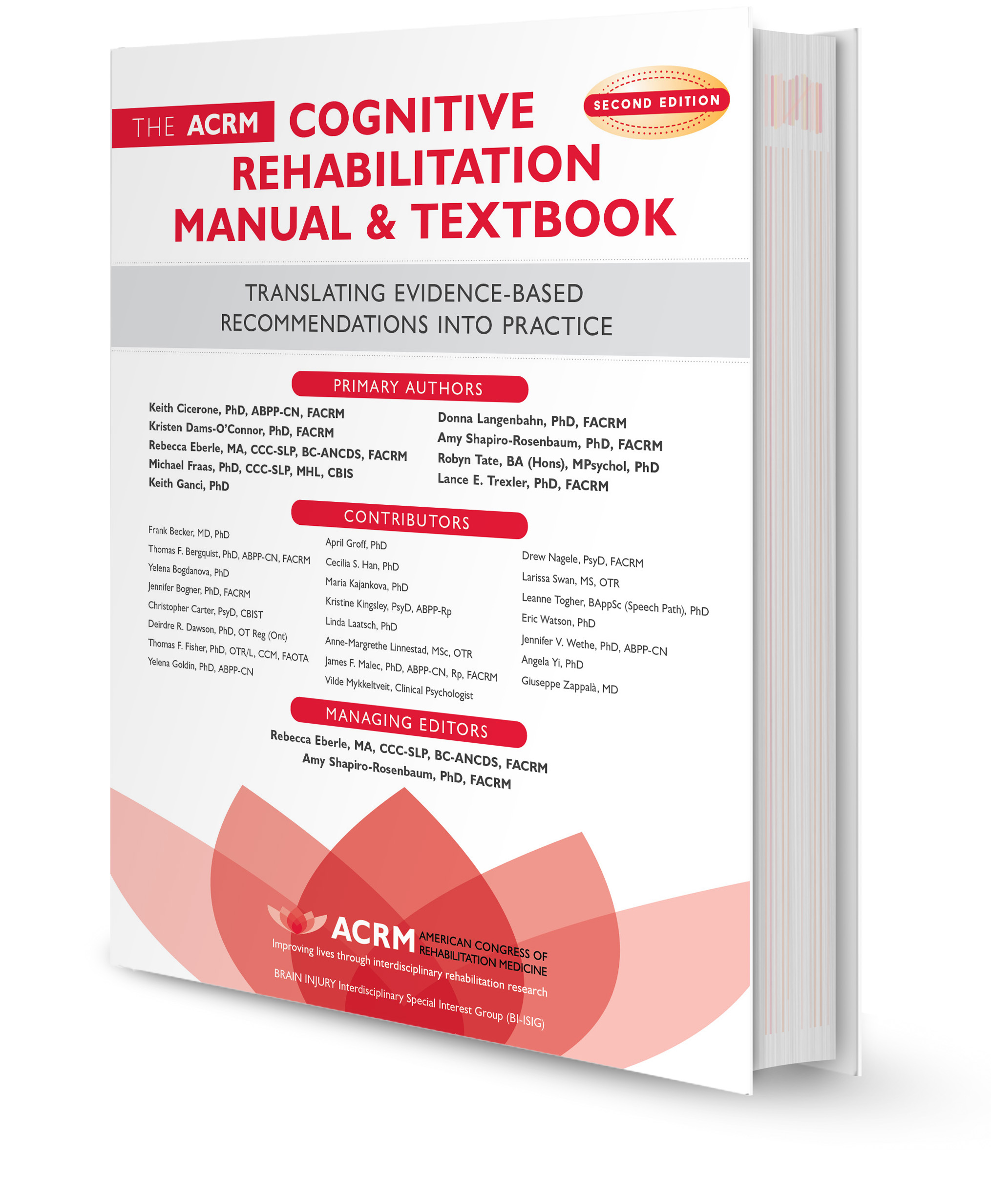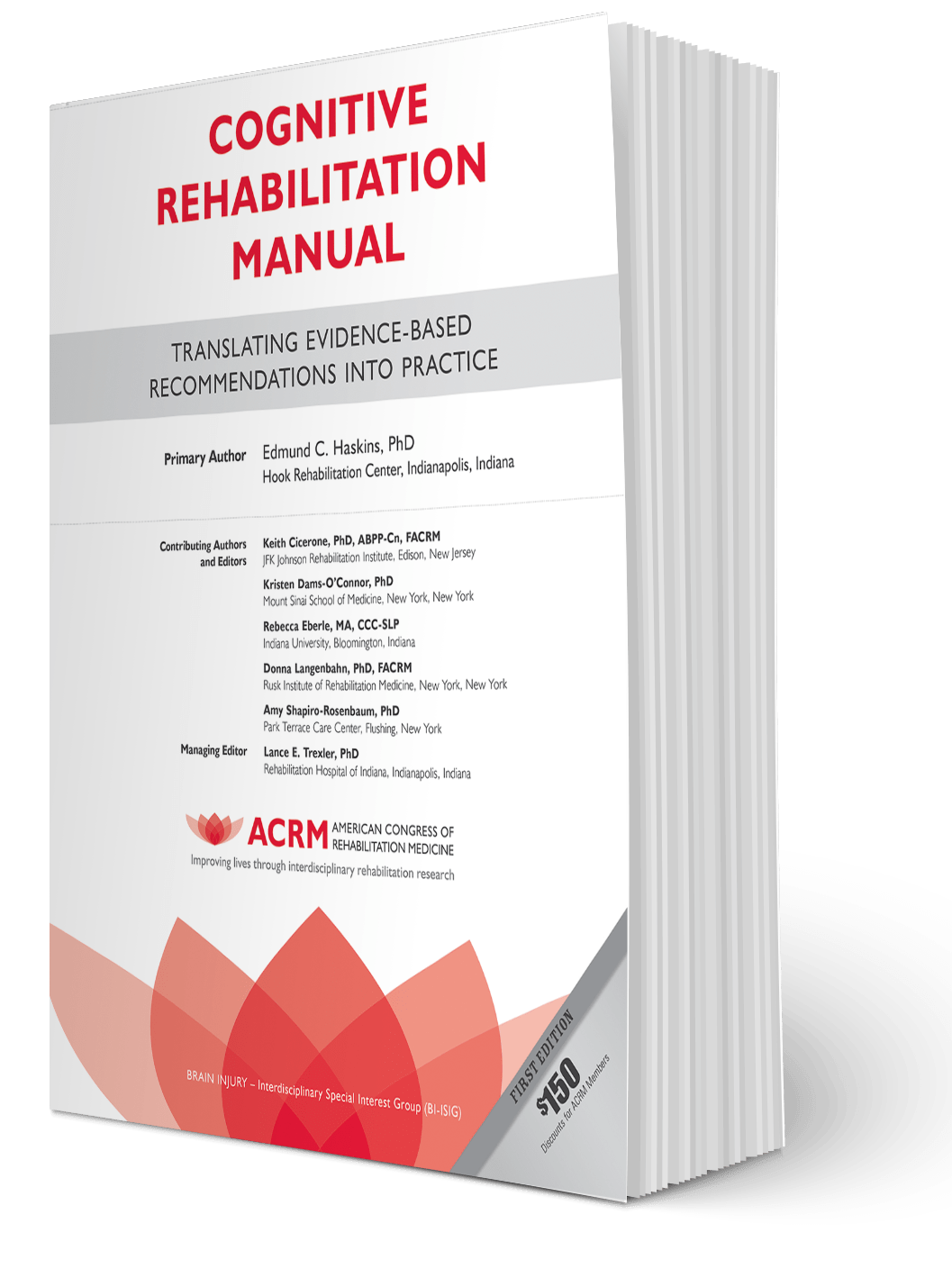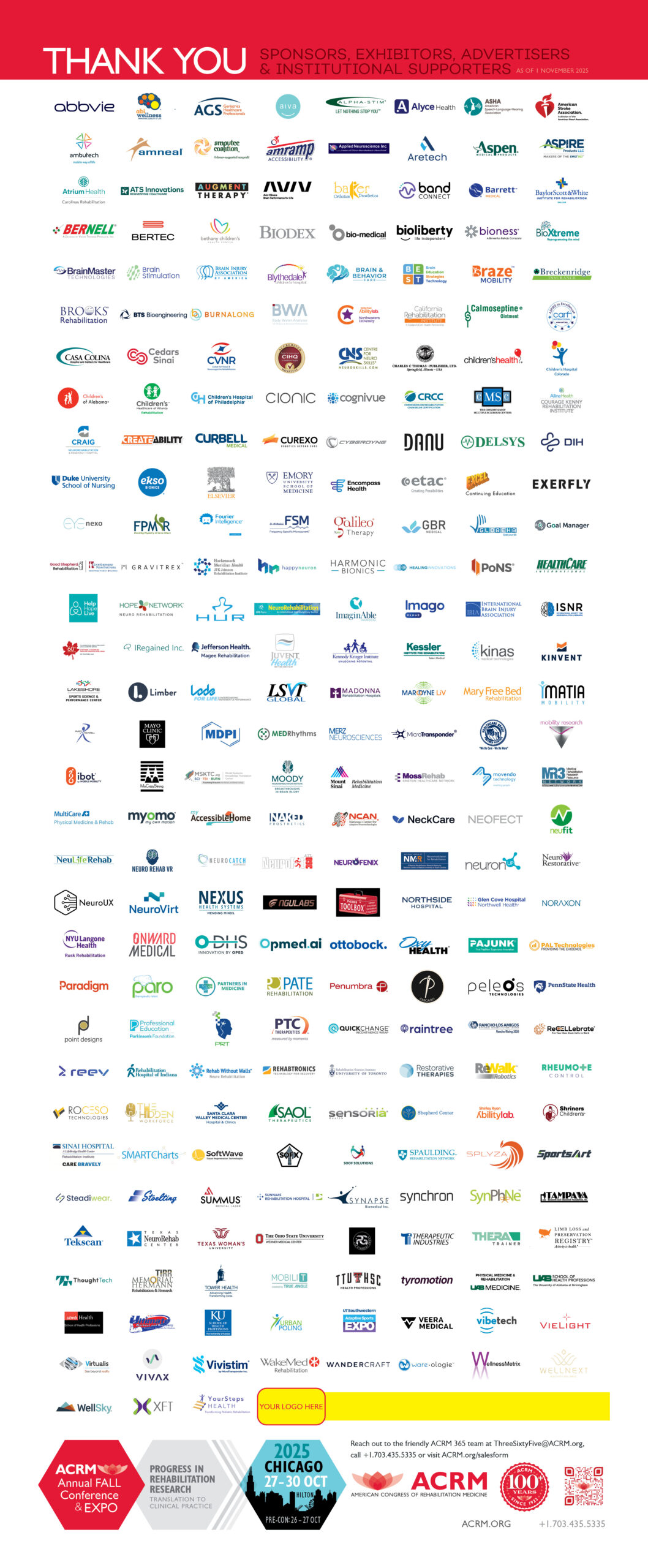Now Available – The ACRM Cognitive Rehabilitation Manual & Textbook SECOND EDITION
The ACRM Cognitive Rehabilitation Manual & Textbook Second Edition represents an exhaustive update and expansion of the previous volume, organized as a graduate-level textbook with extensive instructor resources. New content is based on the most recently published evidence-based review (Cicerone et al. 2019) and includes 12 new or updated treatment recommendations and five new chapters that address function neuroanatomy, single-case methodology for clinical practice, group and comprehensive holistic rehabilitation, implementing and individualizing interventions, and an overview of web-based and other resources. We have integrated updated content throughout the original six first-edition chapters; these include an introductory chapter on conceptualizing, planning and goal-setting for individualized cognitive rehabilitation interventions, and dedicated chapters on implementing evidence-based interventions for impairments in attention, memory, executive functioning, visuospatial functions and apraxia, and social communication.
MORE about the Cognitive Rehabilitation Manual SECOND EDITION >>>
Cognitive Rehabilitation Manual – FIRST EDITION
The ACRM Cognitive Rehabilitation Manual; Translating Evidence-Based Recommendations into Practice is a significant contribution to the field of brain injury rehabilitation. Never before have research outcomes been so accessible for use in everyday clinical practice.
The Manual — all 150 pages, including clinical forms — is a practical guide for the implementation of evidence-based interventions for impairments of executive functions, memory, attention, hemispatial neglect, and social communication. Get the lowest price available when you order from ACRM online.
FIRST EDITION – Special Pricing for Online Buyers
Purchase directly from ACRM and SAVE
ACRM members: ONLY $125
Non-members: ONLY $150
Preview the Cognitive Rehabilitation Manual – FIRST EDITION
Not sure the Manual will meet your needs? Download the Table of Contents to examine the in-depth collection of evidence-based research practices presented and the index of tools and worksheets.
Heralded as a “must-have reference, ” read what brain injury experts and early reviewers are saying…
eManual – FIRST EDITION
The electronic version of the FIRST EDITION Manual. This version is available via a web-based browser. It is not a downloadable PDF.
A Must-Have Reference
The Cognitive Rehabilitation Manual; Translating Evidence-Based Recommendations into Practice is a significant contribution to the field of brain injury rehabilitation. Never before have research outcomes been so accessible for use in everyday clinical practice.
The Manual is ideally suited for clinicians who have had some formal training in cognitive rehabilitation, and who have experience working with individuals with brain injury (e.g., traumatic brain injury, stroke).
The interventions described can be readily used by occupational therapists, speech and language therapists, psychologists, and other rehabilitation professionals.
The Brain Injury Interdisciplinary Special Interest Group (BI-ISIG) of the American Congress of Rehabilitation Medicine (ACRM) is committed to fostering the use of empirically supported interventions to improve the lives of individuals with brain injury. A series of reviews, which are published in the Archives of Physical Medicine and Rehabilitation (Cicerone et al., 2000; 2005; 2011) have reviewed the scientific literature and put forth standards and guidelines for clinical practice based on the quality of evidence available for each intervention.
The Cognitive Rehabilitation Manual operationalizes or “translates” these guidelines into step-by-step procedures that can be used by clinicians who treat individuals with brain injury.
The volume is organized into six chapters. The introductory chapter compiles the clinical wisdom of the authors into a practical roadmap for structuring and implementing cognitive rehabilitation interventions. Treatment considerations and patient factors that may influence the course of treatment are discussed, and a guide to goal-setting that is applied throughout the manual is introduced.
Subsequent chapters present practical guides for the implementation of evidence-based interventions for impairments in each of the following areas: Executive Functions, Memory, Attention, Hemispatial Neglect, and Social Communication.
The content of each chapter draws from empirically-supported rehabilitation interventions included in the Cicerone et al. reviews (2000; 2005; 2011) and the collective clinical experience of the authors of the Cognitive Rehabilitation Manual. Wherever possible, step-by-step guidelines for implementing each intervention and setting relevant individual goals are provided, along with clinical recommendations for tailoring and modifying the intervention according to patients’ needs.
In cases where in-depth treatment manuals exist, full references and links to these materials are provided. Additional appendices include rubrics for goal-setting in each of these domains of functioning, and handouts or worksheets that can be used to record and evaluate progress.
This important volume will raise the bar in cognitive rehabilitation by aiding clinicians in delivering high-quality, empirically-supported interventions to improve the lives of individuals with brain injury.
Hear What Others are Saying About the Manual . . .
More Ways to Learn Cognitive Rehabilitation
Live Training
Two-day, live, introductory course with authors of the Manual.
Printed Manual and 12 hours of continuing education included with registration.
MORE
Online Training
Online access to previously recorded training (audio synchronized with presentation slides) enables you to learn on your own schedule. Printed Manual included with purchase. Learn anywhere, anytime. MORE






